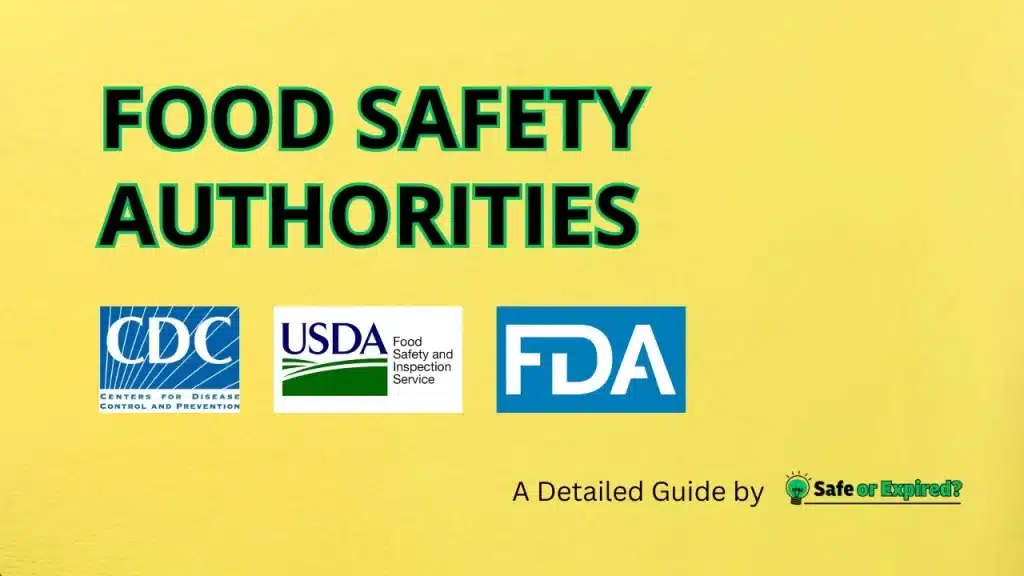Ever wonder who stands guard over the safety of the food on your plate? Food Safety Authorities play a pivotal role in ensuring every meal you enjoy is not just delicious, but also safe and nutritious. From farm to fork, they set standards and enforce regulations that protect public health. Keep reading to know which are these food authorities and what they do.
Top 7 Food Safety Authorities – The Ultimate Guide
Food Safety Authorities ensure the food we eat is safe and free from harmful substances. They set and enforce standards for food production, handling, and distribution, conduct inspections, and manage food recalls to protect public health. The top ones are FDA, NIH, USDA, WHO, CDC, EPA, and FAO.
Food and Drug Administration (FDA)
| Field | Detail |
| Website Link | fda.gov |
| Date of Establishment | 1906 |
| Role | The FDA oversees most food products (except for those under the jurisdiction of the USDA), including dietary supplements, bottled water, food additives, infant formulas, and other food products. It also regulates food labeling and food safety standards. |
| Scope | United States |
FDA is like a big watchdog for our health. They have a very important job: making sure the food we eat and the medicine we take are safe.
The FDA’s rules and their careful checks help keep us safe from harm. They are always working to make sure the things we use and consume every day are not only safe but also the best they can be.
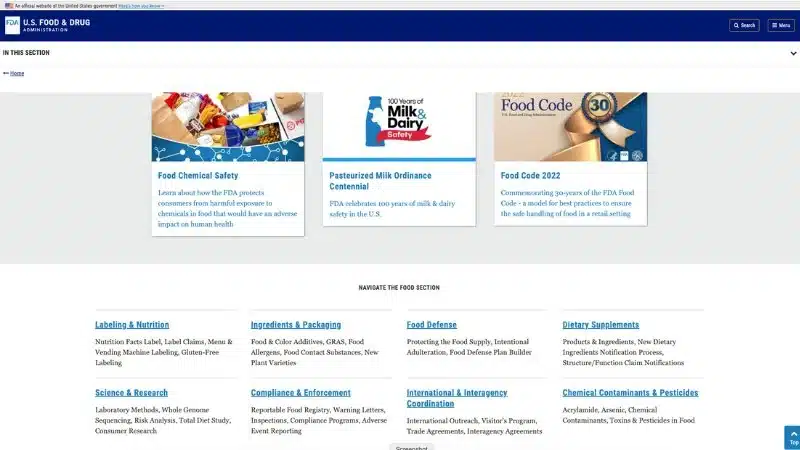
Wondering what the FDA does? Let’s take a look.
- Safety First: The FDA checks on a lot of things to keep us safe. They look at medicines (including dietary supplements) for people and the food in our stores. They also make sure makeup and gadgets like microwaves don’t hurt us. If you’re looking for the best ways to store various types of food, check out “Best Food Storage and Preservation Tips [Easy Guide]” to know how to keep your groceries fresh longer.
- Regulation: It also regulates food labeling and food safety standards.
- Help in Emergencies: The FDA protects our food and medicines from being tampered with, especially during emergencies. They want to make sure we’re safe from attacks or natural disasters.
Over time, some big events made new rules necessary.
- 1906 Pure Food and Drug Act: This was the start. It made sure our food and medicine were not harmful.
- 1938 Federal Food, Drug, and Cosmetic Act: After a dangerous medicine caused deaths, this law said the FDA must check medicines for safety before they’re sold.
- 1962 Kefauver-Harris Amendments: After a tragedy with a drug called thalidomide in Europe, these changes made sure that all medicines were not only safe but also worked as they should.
- 1976 Medical Device Amendments: This came after discoveries that some health tools could be dangerous. Now, there are stricter checks.
United States Department of Agriculture (USDA)
| Field | Detail |
| Website Link | usda.gov |
| Date of Establishment | 1862 |
| Role | Develops and executes federal laws related to farming, forestry, rural economic development, and food. |
| Scope | United States |
The USDA’s Food Safety and Inspection Service (FSIS) mainly ensures that the nation’s commercial supply of meat, poultry, and egg products is safe. It also focuses on keeping the food wholesome and correctly labeled and packaged. It was started way back in 1862 by President Abraham Lincoln, who called it “The People’s Department” because it was meant to help so many people.
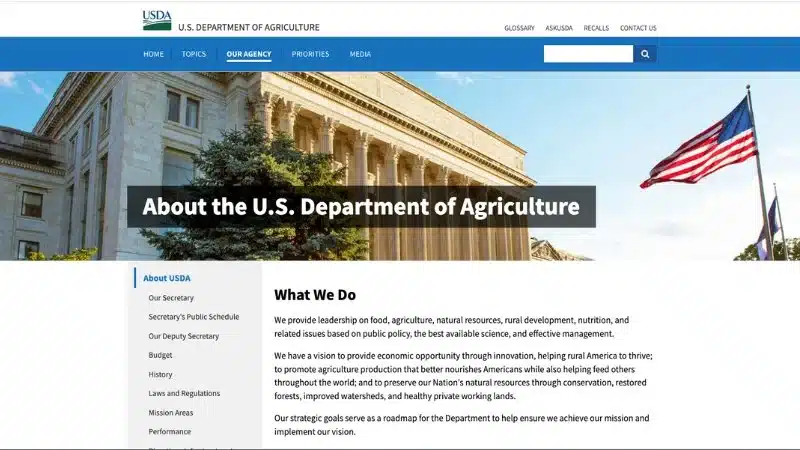
Here’s what it does.
- Keeping Our Food Safe: One of the main jobs of the USDA is to make sure the food we eat is safe. They check on farms, factories, and even the seeds used to grow our food, making sure everything is up to high standards. If you’ve ever seen a label on your chicken or cereal box, chances are the USDA had something to do with making sure it’s good to eat.
- Helping Farmers Grow Our Food: Farmers have a big task: to grow the food that feeds us all. The USDA gives them a helping hand through research, which is like doing homework to find better ways to farm, and through money support to help them buy what they need to grow crops and take care of their animals.
- Taking Care of the Land: Farming and forests take up a lot of space, and the USDA wants to make sure this land is taken good care of. They teach farmers how to use their land without hurting it, making sure there’s plenty of nature left for future generations. This means cleaner water, healthier soil, and more trees.
- Building Strong Communities: The USDA also looks out for rural areas, where a lot of farming happens but where it can be hard to get things like fast internet or loans to start a small business. They offer help so these communities can grow and be great places to live.
- Reaching Out to the World: Beyond helping America, the USDA also helps feed people in other countries, sharing food and farming knowledge. They work to sell American farm products around the world, which helps our farmers and makes sure people everywhere have enough to eat.
It’s easy to come across confusing advice about food preservation. To ensure you’re getting the right information, check out our debunking of “10 Misleading Food Preservation Myths Exposed,” which clears up common misconceptions.
Centers for Disease Control and Prevention (CDC)
| Field | Detail |
| Website Link | cdc.gov |
| Date of Establishment | 1946 |
| Role | It focuses on foodborne illness surveillance and outbreak response, providing support to state and local health departments, conducting epidemiologic studies, and fostering partnerships to enhance food safety. |
| Scope | United States |
CDC is like a health detective agency for the United States. It focuses on foodborne illness surveillance and outbreak response. Furthermore, it provides support to state and local health departments, conducting epidemiologic studies and fostering partnerships to enhance food safety.
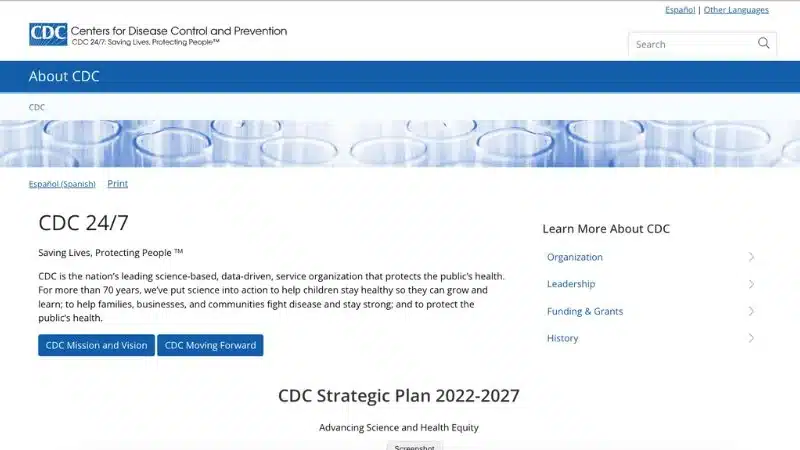
The CDC’s work covers a lot of ground, especially when it comes to keeping our food safe. Here’s a breakdown of what they do.
- Fighting Foodborne Illness: The CDC keeps an eye on diseases that can be spread through food. If someone gets sick from eating something, the CDC steps in to figure out what happened and how to stop it from spreading to more people.
- Support for Local Health Departments: Local health departments are on the front lines, and the CDC is there to back them up. They provide resources, information, and guidance to help local teams respond to health threats quickly and effectively.
- Epidemiologic Studies: This is a fancy way of saying the CDC studies diseases: how they spread, who gets sick, and why. These studies help them find ways to prevent illnesses and protect communities.
- Partnerships for Food Safety: No organization can do it all alone, so the CDC teams up with other groups, both in the U.S. and around the world, to make food safer for everyone. These partnerships mean sharing knowledge, resources, and strategies to fight foodborne diseases together.
Understanding why food spoils can help you prevent it. For a deep dive into the factors that lead to spoilage, read “Why Do Foods Get Spoiled? [13 Reasons & Proven Tips].”
Environmental Protection Agency (EPA)
| Field | Detail |
| Website Link | epa.gov |
| Date of Establishment | 1970 |
| Role | Protects human health by enforcing regulations based on laws passed by Congress. Regarding food safety, the EPA regulates the use of pesticides. It sets limits on the amount of pesticide residues allowed in food. |
| Scope | United States |
The Environmental Protection Agency, or EPA, is like the nation’s eco-warrior. It is responsible for our health and environment. When it comes to our food, the EPA plays a crucial:
- Regulating Pesticides: Before a pesticide can be sold or used in the U.S., the EPA thoroughly reviews it. This ensures that when pesticides are used on our crops, they do their job without harming those who consume the produce or harming wildlife and the environment.
- Setting Pesticide Residue Limits: The EPA decides how much of a pesticide can remain on food. These limits are set based on rigorous science to ensure that daily consumption is not harmful to health, especially focusing on vulnerable populations like children.
- Promoting Safe Pesticide Use: Beyond just setting rules, the EPA also works to make sure pesticides are used safely and effectively. This includes educating farmers on best practices and ensuring that pesticide application methods protect both the environment and public health.
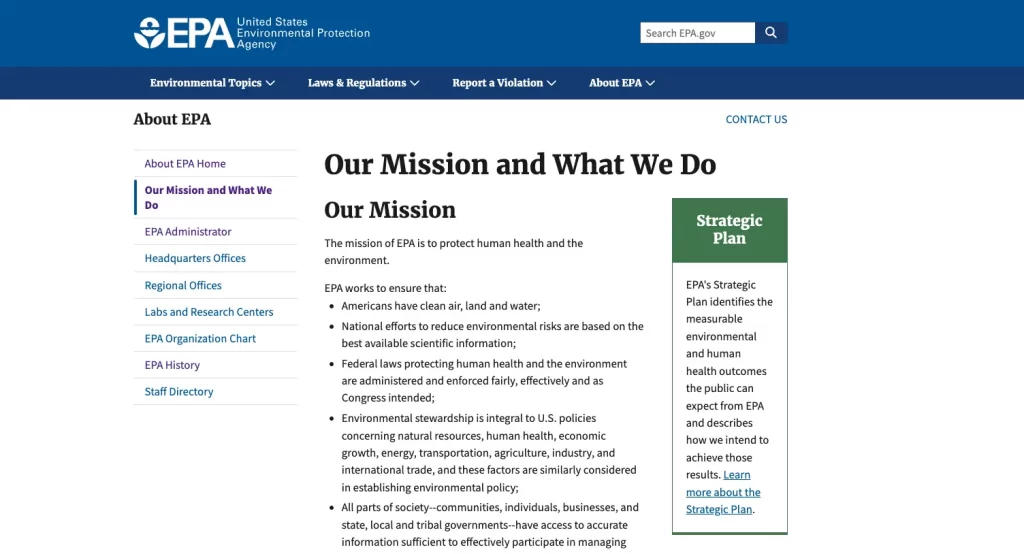
The efforts of the EPA have a direct impact on the safety of the food you eat every day. By regulating pesticides and ensuring that harmful chemicals don’t end up in your food, the EPA plays a key role in preventing potential health risks. Their work means you can enjoy fruits, vegetables, and other products with confidence, knowing that they meet strict safety standards.
Different elements can speed up the spoilage process. Learn more about what specifically causes your food to go bad in “Factors Affecting Food Spoilage: 15 Culprits That Spoil Food.“
National Institutes of Health (NIH)
| Field | Detail |
| Website Link | nih.gov |
| Date of Establishment | 1887 |
| Role | The NIH conducts and supports research on foodborne illnesses and contributes to the knowledge base that informs food safety practices and policies. |
| Scope | United States |
The National Institutes of Health (NIH) serves as the backbone of medical and public health research in the United States. It focuses on disease prevention, health promotion, and groundbreaking research.
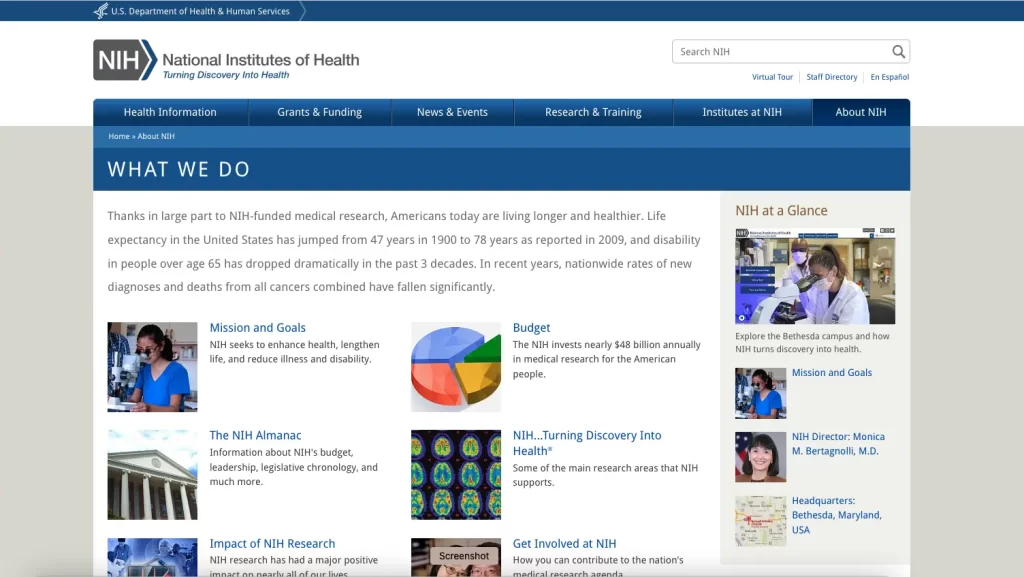
While the NIH might not be the first name you think of in food safety, its contributions are significant. Here’s how:
- Research on Foodborne Illnesses: The NIH plays a crucial role in understanding the nitty-gritty of how food borne illnesses work, how they affect our bodies, and how outbreaks can be controlled. This research is vital for developing new ways to diagnose, treat, and prevent these illnesses.
- Informing Food Safety Practices and Policies: The knowledge gained from NIH research helps shape the guidelines and policies that keep our food safe. Even though the NIH doesn’t set these policies directly, its research provides the evidence base that policymakers and regulatory agencies, like the FDA and USDA, rely on to make informed decisions.
World Health Organization (WHO)
| Field | Detail |
| Website Link | who.int |
| Date of Establishment | 1948 |
| Role | The WHO works to protect public health worldwide, including the safety and nutritional quality of food. It develops international food standards, guidelines, and codes of practice to prevent foodborne diseases. |
| Scope | Global |
The World Health Organization (WHO) plays a crucial role in global health, including the domain of food safety. As a food safety authority, WHO works to ensure that food consumed worldwide is safe, nutritious, and accessible to everyone. All of these things are vital for promoting health and preventing diseases.
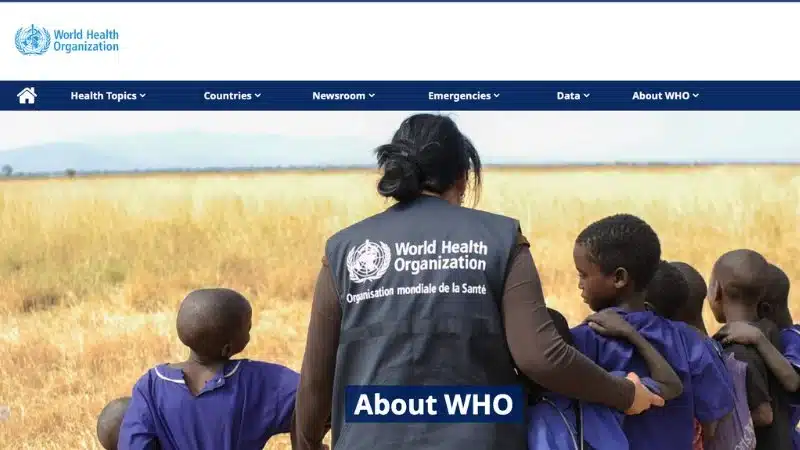
WHO’s involvement in food safety encompasses several key areas:
- Setting Standards: WHO collaborates with the Food and Agriculture Organization (FAO) to establish international food standards, guidelines, and codes of practice. The Codex Alimentarius Commission, created by WHO and FAO, is pivotal in this effort, providing the food standards that countries adopt and implement.
- Risk Assessment: WHO conducts risk assessments to identify and evaluate hazards in food, determining the risk to consumers’ health. This scientific advice informs the development of standards, guidelines, and recommendations to manage food safety risks.
- Strengthening National Food Safety Systems: WHO assists countries in strengthening their national food safety systems. This includes developing and implementing effective food legislation, establishing efficient food control operations, and building capacity for food safety surveillance.
- Responding to Foodborne Disease Outbreaks: WHO coordinates international efforts to investigate and respond to foodborne disease outbreaks. Through the International Food Safety Authorities Network (INFOSAN), WHO facilitates the rapid exchange of information during food safety emergencies, helping to prevent the spread of diseases.
Food and Agriculture Organization of the United Nations (FAO)
| Field | Detail |
| Website Link | fao.org |
| Date of Establishment | 1945 |
| Role | It focuses on defeating hunger and improving nutrition and food security. |
| Scope | Global |
The FAO isn’t just another organization; it’s the driving force behind global efforts to end hunger and malnutrition. It works like the world’s dietitian, making sure that people everywhere have access to the food they need to live healthy lives. But it’s not just about quantity; it’s also about quality. The FAO steps in to make sure that the food we eat isn’t just filling our stomachs but nourishing our bodies too.
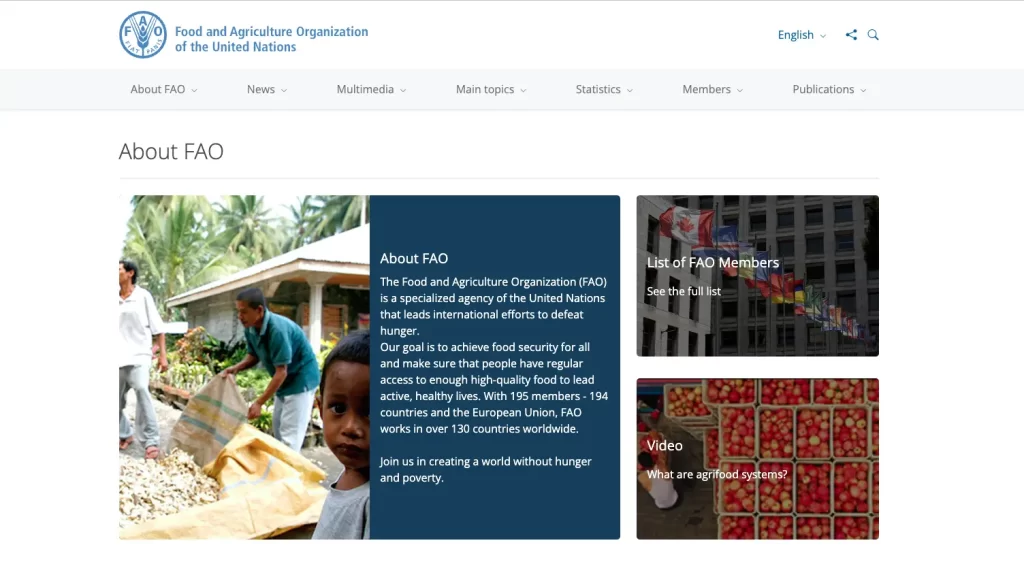
Here’s how the FAO makes a difference:
- Setting Global Standards: The FAO works with experts from around the world to create guidelines and standards for food safety. These rules help countries ensure that their food is safe to eat.
- Technical Support for Countries: Not every country has the resources to build a top-notch food safety system from scratch. The FAO lends a hand by providing technical expertise and support, helping countries to set up or enhance their own food safety protocols.
- Promoting International Standards: Once these standards are set, the FAO doesn’t just sit back and relax. It actively encourages countries to adopt and implement these international standards, fostering a global culture of food safety.
Following proper food safety guidelines is crucial. For authoritative advice on keeping your food safe, don’t miss “Main Food Safety Guidelines by Top 4 Institutions.”
Conclusion
Food Safety Authorities are vital in maintaining the safety and integrity of our food supply. We should thank the FDA, WHO, USDA, NIH, CDC, and FAO. Their efforts ensure that:
- Every bite you take is free from harmful contaminants.
- Food producers adhere to strict safety standards.
- Public health is safeguarded against foodborne illnesses.
- Consumers have access to accurate, science-based information on food safety.
- Continuous innovation and regulation updates respond to emerging food safety challenges.
That’s all about food safety authorities.

